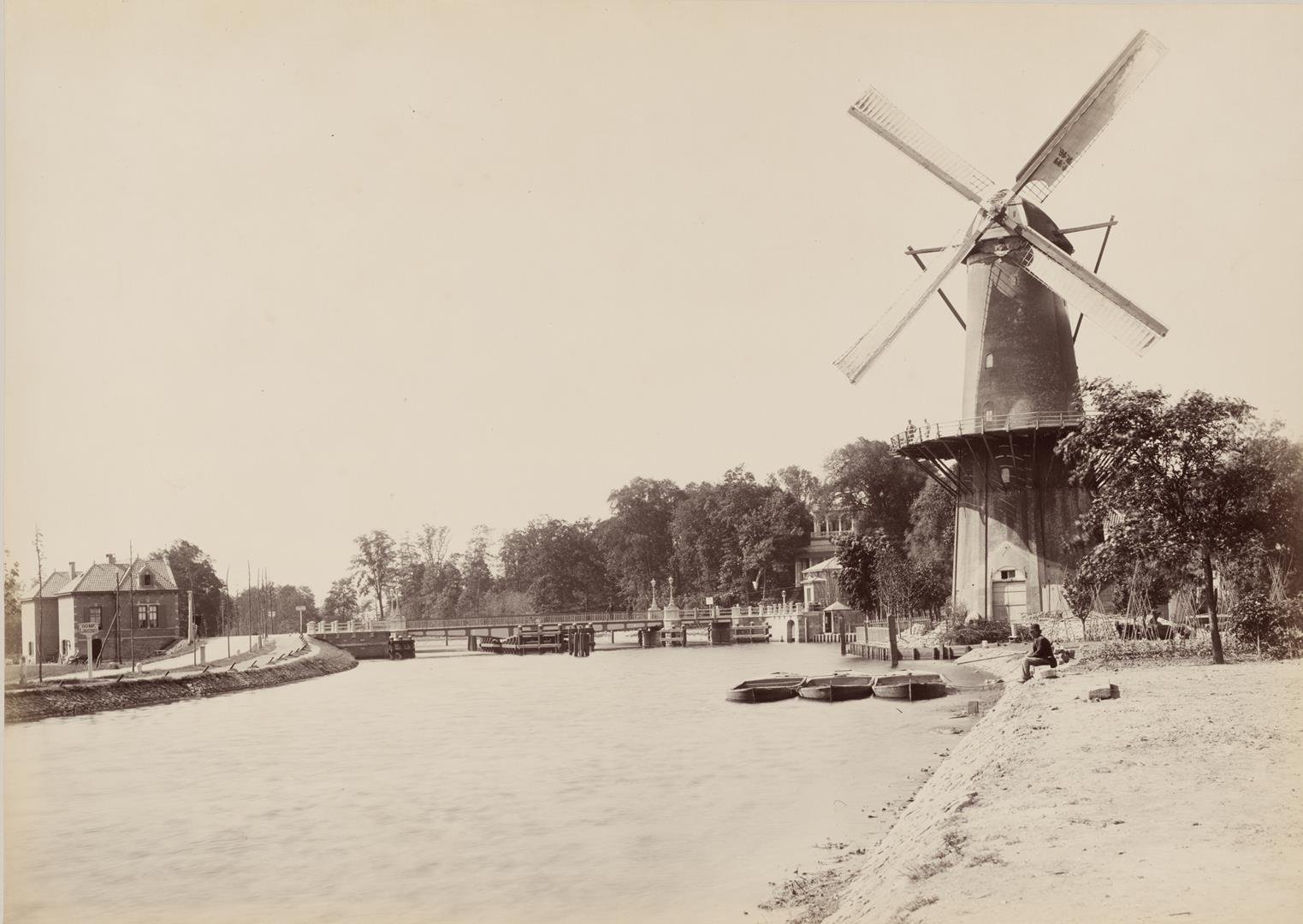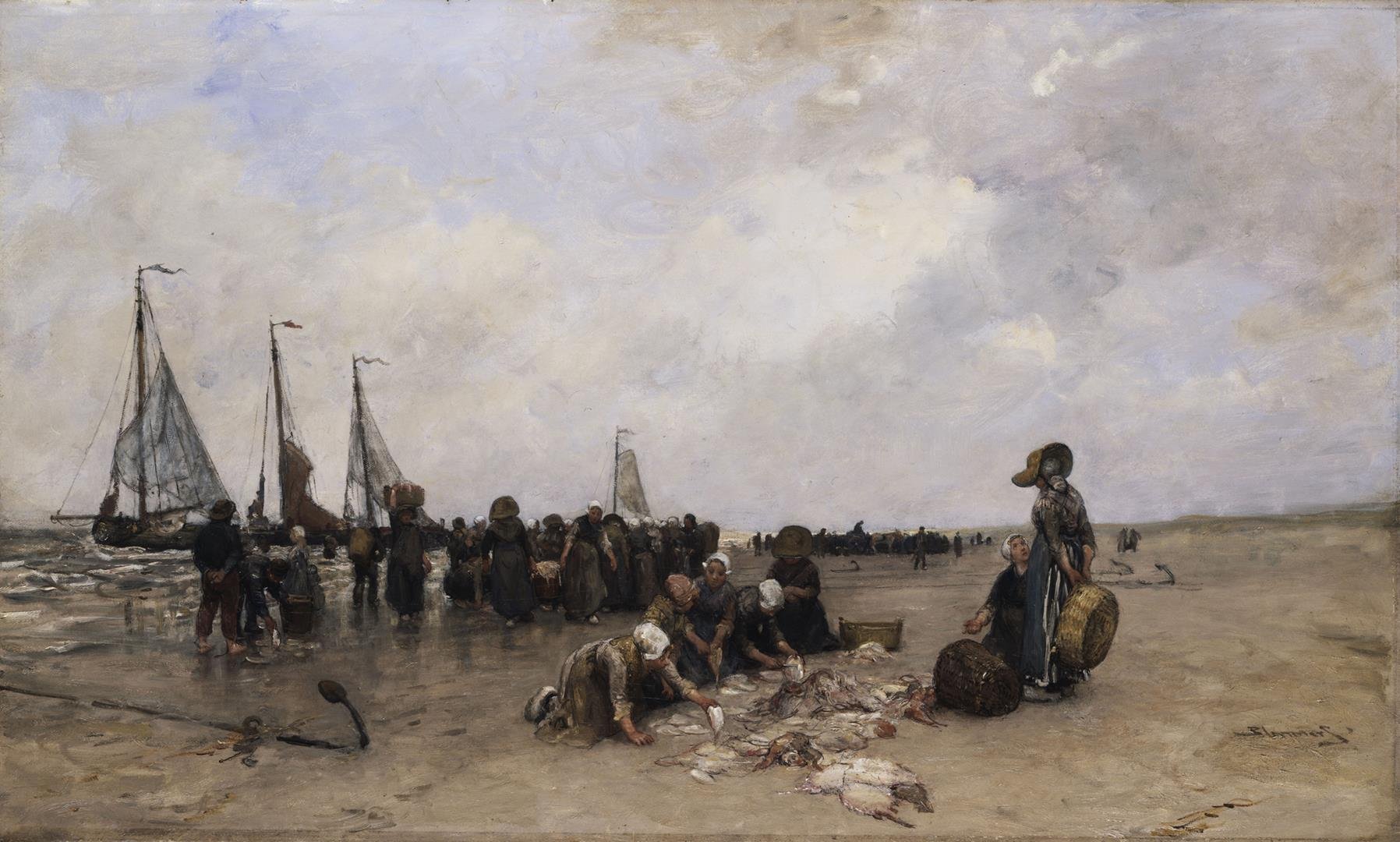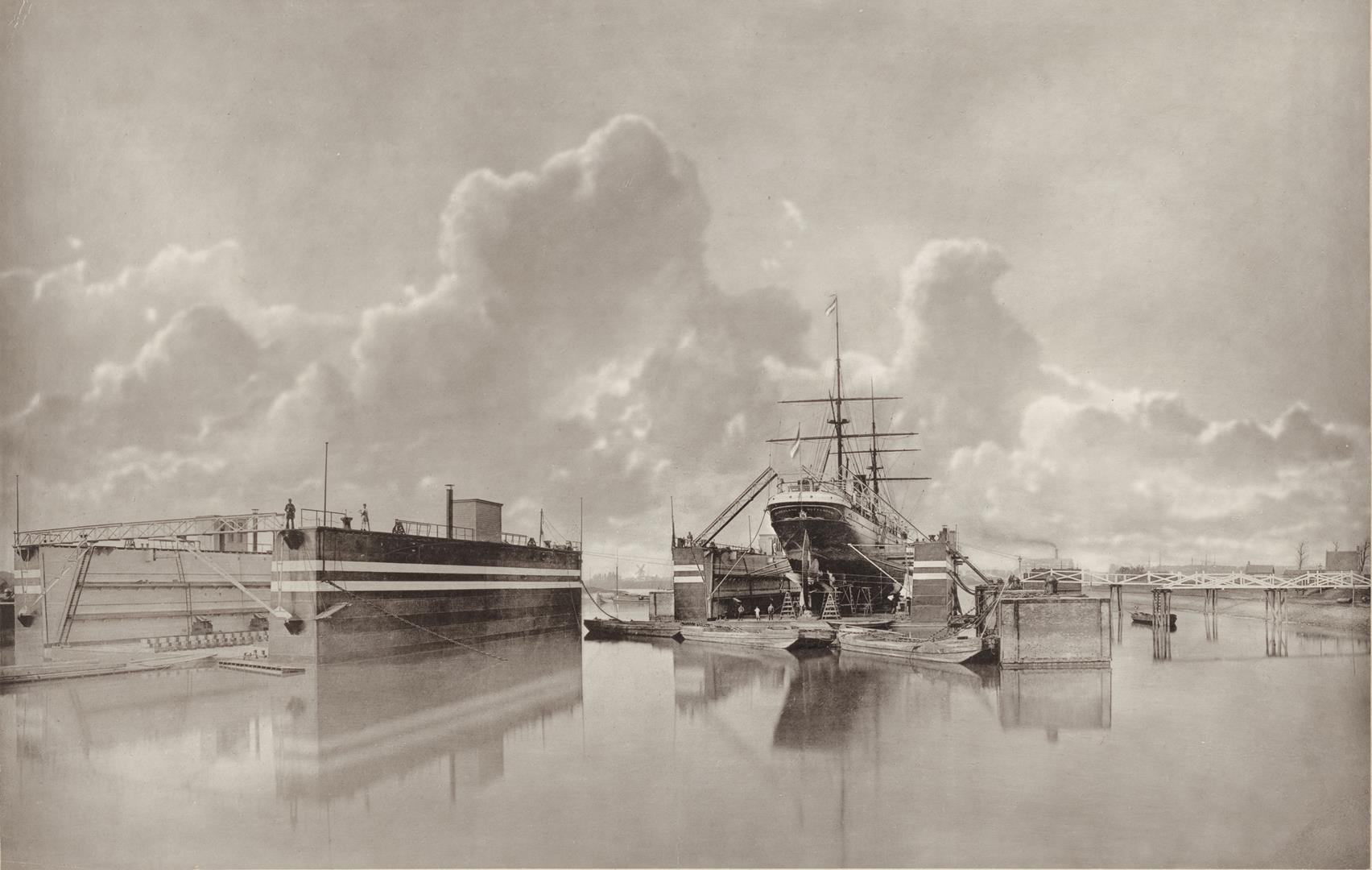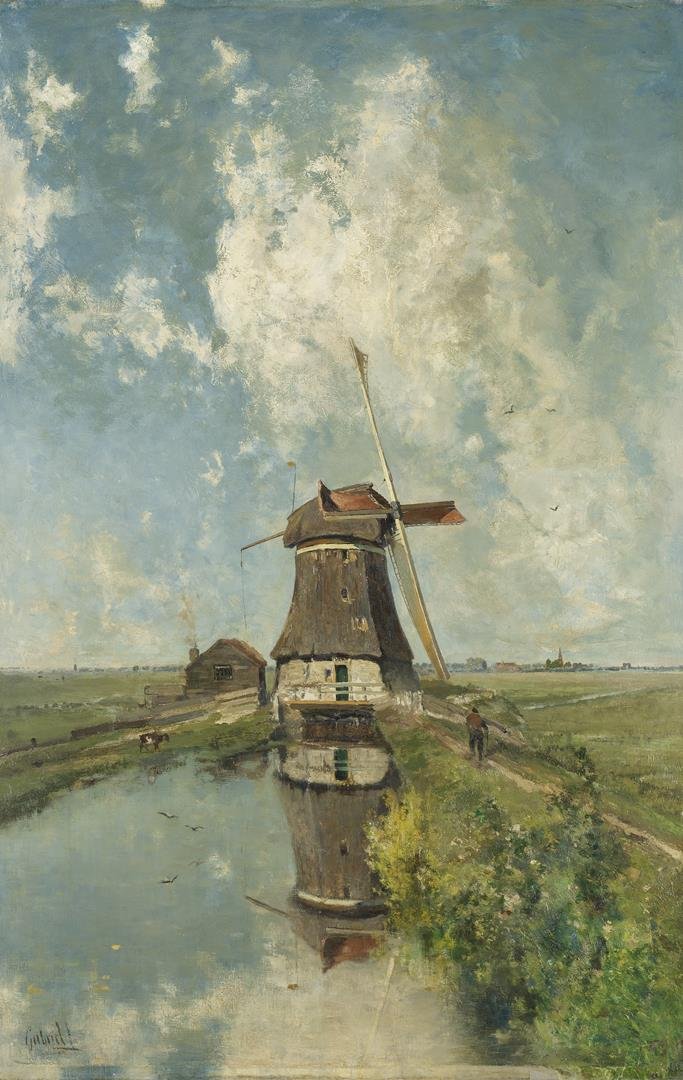Industrialization
The Industrialization set in relatively late in the Netherlands. It was only from 1860 onwards that industrialization and urbanization started to leave their marks on the Dutch landscape. Kilometers of train rails were constructed. The digging of channels and building of railroad bridges opened up various areas. The big infrastructural works altered the typically Dutch landscape with its desolate fields, vacant polders and low horizons. Instead of all this, a modern landscape, with steam driven pumping stations, broad and straight rivers and a web of railways and telegraph poles, emerged.
Painting
Following the French School of Barbizon painters belonging to The Hague School, amongst whom Willem Roelofs, Anton Mauve, the Maris brothers and Johan Weissenbruch went outside in order to capture the Dutch landscape on canvas. As subject of their paintings they chose places where the rise of industry and cities was still visible. In a realistic manner and with great sense of use of light and atmosphere they painted the dunes, the sea and polders.
Photography
Not only painters belonging to The Hague School, but also photographers showed a keen interest in the alterations of the landscape. Commissioned by the engineers at Rijkswaterstaat a small group of photographers, amongst whom Pieter Oosterhuis and Henri de Louw, documented the examples of the constructional tour de force that emerged in the landscape. The business like photo series which they made clearly show how the Dutch landscape was permanently and radically changed by the end of the nineteenth century.

Publication
Hatje Cantz published the German catalogue ‘Der Weite Blick, Landschaften der Haager Schule aus dem Rijksmuseum' ISBN 978-7757-2270-4 (hardcover: € 45,- / softcover: € 39,50).The bookshop also sells the Dutch publication 'Spiegel van Holland, Het mooiste van de Haagse School in het Rijksmuseum' (€ 19,90).
In collaboration with
Neue Pinakothek
Rijksmuseum Amsterdam
Thanks to
Bankgiro Loterij
VSB Fonds


